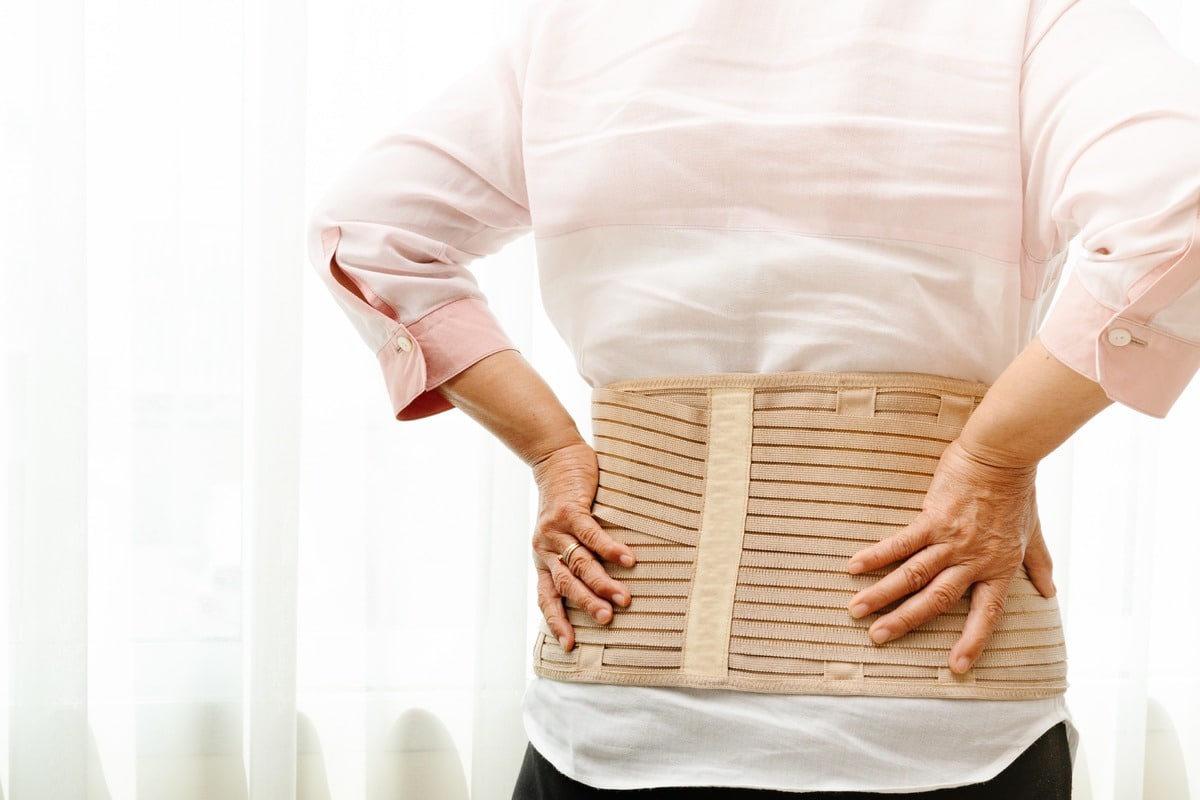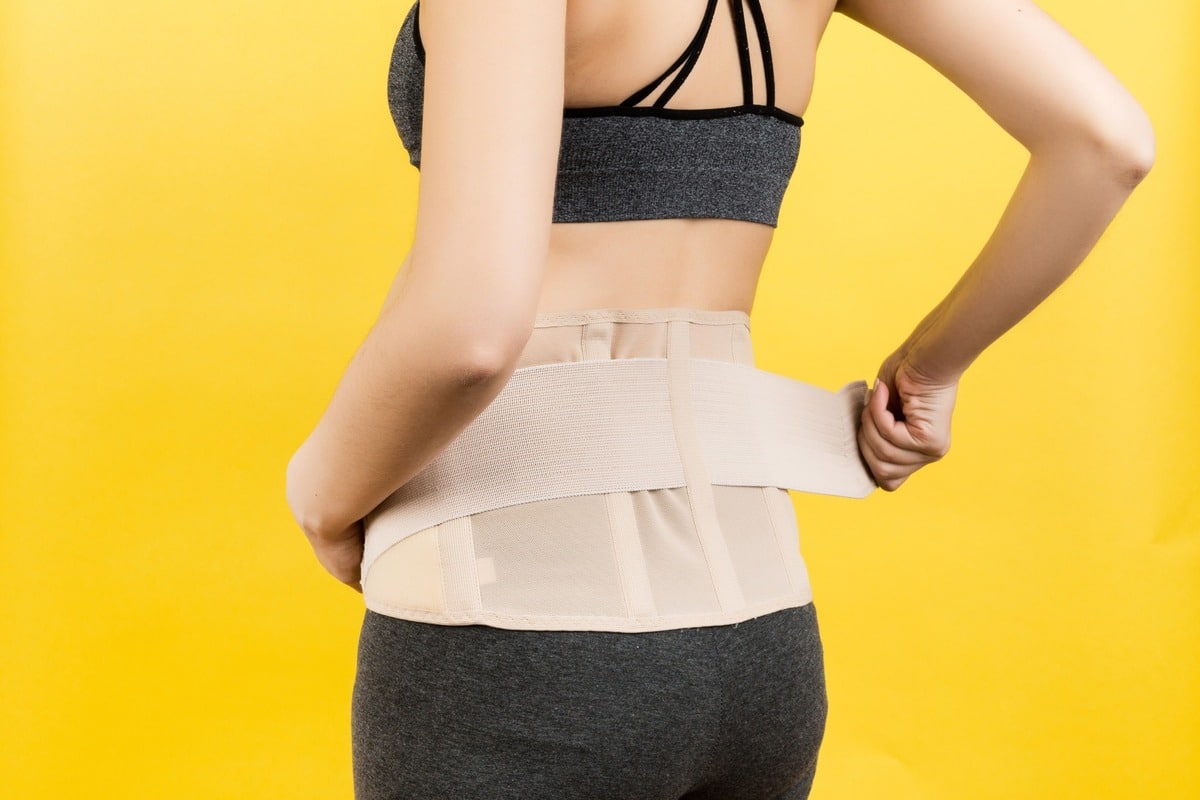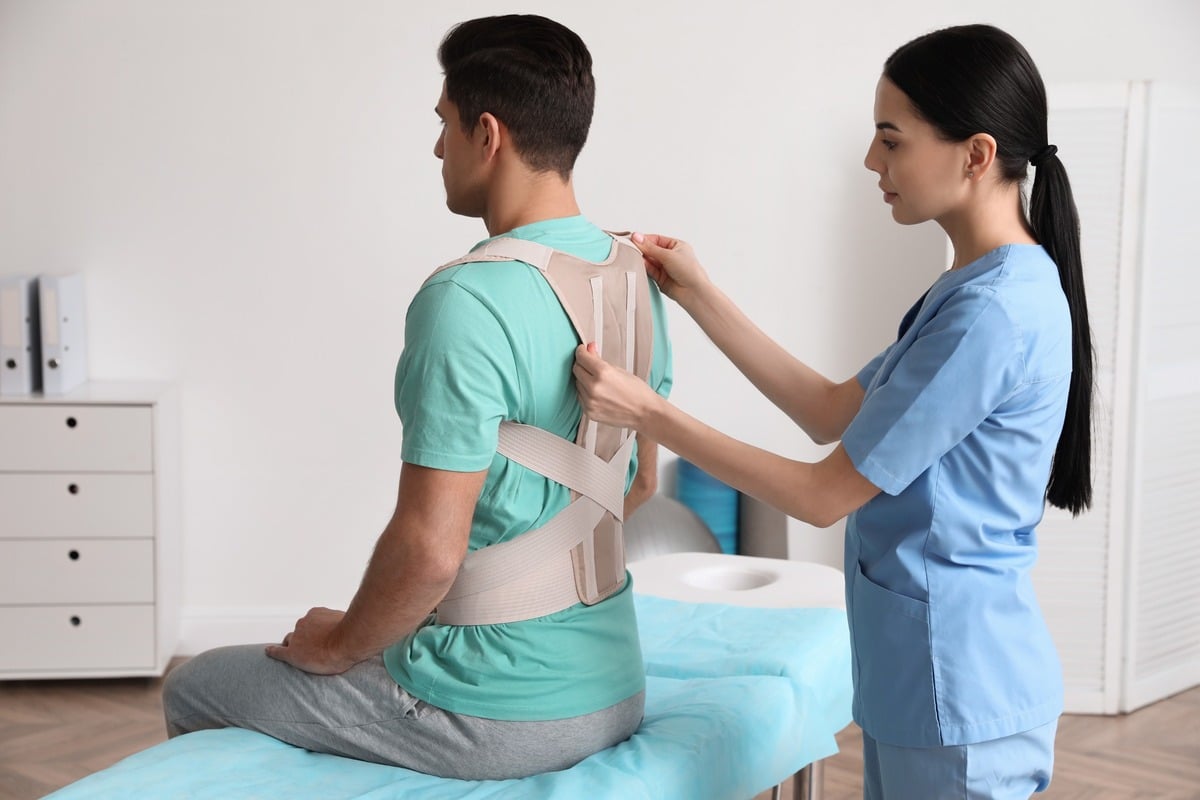An orthopedic corset is a medical device most often prescribed to correct spinal deformity. It is recommended for treating a variety of disorders, including scoliosis or lordosis, as well as for relieving certain types of back pain. It’s an effective treatment, provided it’s properly adjusted to the patient’s needs. Want to find out more about orthopedic corsets? In this article, we’ll take a look at the different ways in which they can be worn, and some tips on how to make wearing them more comfortable.
What is an orthopedic corset?
By definition, an orthopedic corset is a medical device designed to immobilize all or part of the spine. It is prescribed by a physical rehabilitation physician (or PRM), rheumatologist, orthopedist-orthotist, neurosurgeon or orthopedic surgeon to treat a spinal disorder. The main aim of the treatment is to cure or slow down the symptoms of the disease. This trunk orthosis is custom-made to maintain correct back alignment. In some cases, it aims to reduce back pain by minimizing pressure on muscles, nerves or other organs.
Lumbar corset, support belt, immobilization corset, neck brace… what are the differences?

There are different types of orthopedic corset. It’s up to the treating physician to choose the right model for you. This depends on a number of criteria, including the patient’s age, morphology, level of mobility and other anatomical factors, the pathology, and the progression of the disease. Three types of corset can be distinguished.
The support corset
This postural correction device is prescribed for vertebral fractures, herniated discs or low back pain. Its purpose is to immobilize the spine and relieve the pain caused by the condition. The lumbar support corset, the oval corset and the neck brace are all examples of orthopedic support corsets.
Correction corset
This is mainly used to stabilize the disease or slow its progression, in order to avoid surgery. It is prescribed for scoliosis or kyphosis. Examples of corrective orthopedic corsets include the CTM, GTB, Milwaukee, Garchois, nocturnal hypercorrectors, Boston corset, Charleston corset, Caen corset, etc.
Minerva corset
As a medical device designed to support the upper back, the neck brace is used to immobilize the cervical or upper thoracic spine. It is prescribed in cases of trauma or pathology in the areas concerned. It can also feature an occipital support, a forehead band or a chin support.
What’s more, as it is made to measure, the orthopedic corset for children and teenagers is regularly readapted in line with their stage of growth. A check-up is carried out every six months or every year to ensure proper treatment.
How is an orthopedic corset made?
To obtain a custom-made orthopedic corset, there are several steps to follow.
Examination and measurement
The first step is to examine the patient for a personal interview and clinical examination. Next, the doctor will take measurements or impressions. To do this, the orthopedist may measure the thoracic circumference, the height of the thoracic contour, the length of the back, the waist circumference, and so on. It all depends on the technology used. Measurements or impressions can be taken manually, using plaster strips. This operation can be painful, but the orthopedist can also take measurements using advanced tools such as 3D torso analysis. In this case, the procedure requires no direct contact and is therefore painless. What’s more, it’s quicker, more precise, more comfortable and more discreet.
Manufacture
Next, measurements are used to select the ideal orthopedic corset, the type of material to be used according to support needs, and the opening, closing or adjustment system required to make the device. For example, 3D modeling is used to rework the impression, then the orthopedic corset is manufactured using the recommended materials. Plastic, polyurethane foam or polypropylene are generally used. The orthopedic corset is also customizable for those who attach great importance to aesthetics; i.e., the patient can choose patterns or colors according to his or her preferences before the corset is made.
Fitting and finalization
Once the orthopedic corset has been made, the specialist or orthopedist performs an initial fitting. During this stage, he or she identifies painful points of support, prominent areas or areas that are too tight, for example, so that the brace can be properly adjusted if necessary, for greater wearing comfort. On final delivery of the medical device, the orthopedist gives the patient or family member advice on how to wear, use and care for the orthopedic brace.
Follow-up
Afterwards, the patient can take part in re-education sessions designed to teach him/her how to use the orthopedic corset properly or adapt to it without frustration. Ongoing monitoring is also carried out on a regular basis to monitor the progress of the disease, the patient’s condition, and so on. This step is also essential to determine any readjustments to be made to the orthopedic corset.
How long should I wear an orthopedic corset?
Before consulting a specialist, it’s a good idea to prepare yourself mentally, as wearing an orthopedic corset can be temporary or permanent. The duration of treatment will depend on a number of factors, such as age, the type of disorder to be treated and the objective of the treatment. In children and adolescents, orthopedic braces are worn for longer periods. Some even wear it for up to ten years, until they have finished growing. When treating scoliosis, for example, wearing the brace for around 17 hours will save the patient from having to undergo surgery.
In cases where the disease is severe or has already reached a fairly advanced stage, patients wear the orthopedic corset day and night, taking it off only to shower or play sport. For some people, usually adult patients, the orthopedic brace is worn for life, to limit the effects of the disease on daily activities (including pain).
In some cases, the orthopedic brace is worn only at night. In fact, if the corset is mainly used for its analgesic effect, it is worn for only a few hours a day. If the disease is not progressive, the corrective orthopedic corset is removed once the doctor has established that the patient’s condition has significantly improved. This is particularly the case with young people who have reached the end of their growth spurt.
What are the disadvantages of an orthopedic corset?

While the orthopedic corset has undeniably proved its worth as part of a treatment program, it does require a two-week to one-month adaptation period. This can be a real challenge for some patients. At first, patients have to get used to wearing the corset because it corrects their posture. Until they get used to it, they may feel some stiffness in their back. As the corset serves to immobilize all or part of the spine, it limits the movements that can be made. As a result, you’ll need to relearn certain movements and adopt particular positions while wearing it, to pick up objects, sit down, lie down, get dressed, sleep, etc. If ill-fitting or badly worn, the orthopedic corset may cause pain or itching in certain areas, due to friction for example. This is perfectly normal, given that the device is often made from plastic (polypropylene) with foam inside.
Even so, today’s orthopedic corsets are more modern. They are thinner, lighter and much more discreet. Adolescents are particularly concerned about this, because even though they can wear almost any type of clothing, they tend to look for clothes that will hide the corset. There’s also the fear of other people’s stares and judgments, or of unpleasant remarks. As such a situation can have a major impact on teenagers and young children, parents and other caregivers need to be supportive and caring.
Practical advice on how to wear an orthopedic corset properly
Getting used to wearing an orthopedic corset on a daily basis is not easy. But there are a few tips to help make the duration of treatment more pleasant for patients.
- Don’t hesitate to ask questions: during consultations, the various stages from impression taking to fitting, or during check-ups, ask your orthopedist questions about anything you don’t understand, anything that’s bothering you, or how the treatment is progressing. This will help to reassure you, or, for example, ask your orthopedist’s advice on any new activities you wish to undertake (particularly in the case of physical activities)
- Protect your skin: don’t forget to wear an undershirt under your orthopedic corset to protect your skin from rubbing and pinching. You can opt for a jersey or seamless cotton model, for example, for greater comfort and to avoid marks on the skin. As the corset makes you sweat, maintain good hygiene by washing every day.
- Follow your orthopedist’s advice carefully: he or she will give you tips on how to make the treatment more comfortable and enjoyable.
- The adaptation phase: in some cases, the orthopedic corset can also be worn progressively, for example for half an hour a day at first. The wearing time is then gradually increased over the weeks until it becomes permanent. At the end of the adaptation phase, the orthopedist sets the ideal wearing time, which can be up to 23 hours a day.
- Relax after dark: if you wear the brace day and night, take it off for a few minutes when you wake up to relax your back a little.
- Keep your weight stable: the orthopedic corset is made to measure, so frequent variations in weight can make it uncomfortable and may require more frequent readjustment.
- Take good care of your orthopedic corset: you need to clean it daily to ensure good hygiene. You can use soapy water or alcohol to scrub the surface and a clean towel to dry it quickly.
And what about you? What are your tips for wearing an orthopedic corset? Don’t hesitate to share your tips with us in the comments section
